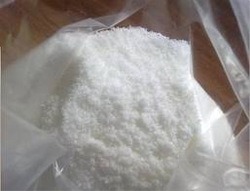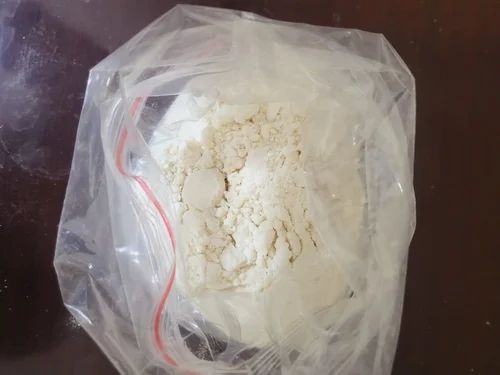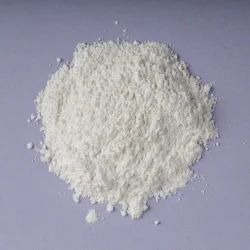DXM Freebase
$50.00
DXM Freebase is the pure neutral form of dextromethorphan, a pharmaceutical and research chemical known for NMDA antagonism and dissociative properties, used mainly in neuropharmacological studies.
Preice is per gram(g), contact us for bulk price
Buy DXM Freebase (Dextromethorphan Freebase) – USA & Europe
1. What is DXM Freebase?
DXM Freebase refers to the unbound, neutral base form of dextromethorphan, a widely used cough suppressant and dissociative agent. Unlike its hydrobromide salt form, the freebase is less water-soluble but is often used in research contexts for its pharmacological properties or for formulation in different delivery systems.
2. Chemical Composition & Structure
Dextromethorphan Freebase has the molecular formula C18H25NO and a molar mass of 271.4 g/mol. It is a morphinan derivative with a 3-methoxy and 17-methyl substitution and is closely related structurally to opioid compounds without typical opioid activity. The freebase is an odorless crystalline white or yellowish powder, freely soluble in organic solvents such as chloroform but poorly soluble in water.
3. Research Applications
DXM Freebase is studied for its role as a non-competitive NMDA receptor antagonist and sigma-1 receptor agonist. Research investigates its neuroprotective, analgesic, dissociative, and antidepressant effects. The freebase form allows for specialized preparation and pharmacokinetics assessment in various experimental setups.
4. Recommended Laboratory Handling & Safety Guidelines
Handle with appropriate personal protective equipment including gloves and eye protection. Use in well-ventilated areas or fume hoods to avoid inhalation. Store in tightly sealed containers away from moisture and light to maintain stability.
5. Hazard Warnings & Risk Statements
Classified as harmful if swallowed or inhaled and may cause skin and eye irritation (GHS07). Avoid exposure through direct contact, inhalation, or ingestion. Follow safety data sheet instructions rigorously.
6. Compatibility with Other Chemicals
Soluble in ethanol, chloroform, and other organic solvents; sparingly soluble in water. Avoid strong oxidizers or reactive chemicals.
7. Emergency Protocols for Exposure
In case of skin or eye contact, flush with plenty of water. If inhaled or ingested accidentally, seek immediate medical intervention.
8. Storage Stability & Shelf Life
Store in cool, dry, and dark conditions below room temperature. Use airtight containers to prevent degradation and moisture ingress.
9. Licensing & Purchase
Available for research use where legally permitted. Confirm licensing and regulations before procurement.
10. Legality of Online Purchase
Legal status varies by jurisdiction; buyers must ensure compliance with local laws.
11. Laboratory Safety Practices
Use appropriate PPE, controlled environment, and proper disposal protocols.
12. Medical Considerations
Avoid exposure during pregnancy or in individuals with respiratory or neurological conditions.
13. Potential Allergic Reactions
Minimal but wear gloves to prevent contact dermatitis.
14. Interactions with Other Research Chemicals
Potential CNS interaction with serotonergic, opioid, or dissociative agents; caution and documentation advised.
15. Pregnancy Precautions
Not recommended.
16. Handling for Consistency
Use precise weighing instruments and follow storage protocols for reproducibility.
17. Optimizing Research Outcomes
Employ high-purity samples and validated analytic methods.
18. Reported Pharmacological Effects
Acts as a cough suppressant, dissociative, neuroprotective, NMDA antagonist, and sigma-1 receptor agonist.
19. Known Adverse Effects
Reactions may include dizziness, nausea, hallucinations, and at higher doses, dissociation.
20. Severe Exposure Responses
Medical assistance required for overdose or adverse events.
21. Solvent Use
Dissolves readily in organic solvents such as ethanol and chloroform.
22. Research Timing Importance
Maintaining dosing schedule enhances study outcomes.
23. Recommended Storage Duration
Stable for years under ideal storage.
24. Post-Research Stability
Proper storage extends shelf life; dispose of any degraded samples appropriately.
25. Dependency or Sensitization Risk
Low risk of addiction but psychological dependence potential exists.
26. Long-Term Storage Recommendations
Seal in an airtight container under inert atmosphere when possible; store cool and dry.
27. Alternative Research Molecules
Other NMDA antagonists include ketamine, memantine, and phencyclidine.





Reviews
Clear filtersThere are no reviews yet.